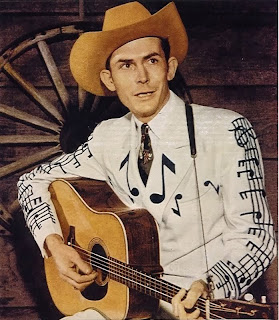When I drive, I switch between listening to music and local
news stations. One thing that makes me change the channel quicker than anything
is a newscaster who speaks in a nasally voice. Even the slightest nasal voice
leaves me with a bad case of the chills and I forget the news she is reporting.
I’d rather listen to a chipmunk reporting about wild fire or a recent acorn
heist.
In singing, a singer who has excessive nasality in his voice
might risk losing his audience altogether. Listeners may be distracted by the
unpleasant vocal quality and miss the opportunity of hearing a heart-wrenching,
beautiful lyric he has written.
I have to admit, in some genres, some nasality is a welcome
quality or even a necessity to sound authentic. Take the example of Hank
Williams.
I can’t imagine his “Cold, Cold Heart” or “Your Cheatin’
Heart” without his famous nasal twang. But Mr. Williams also had solid
breathing technique. Take note of his famous yodeling in the chorus of his song
“Long Gone Lonesome Blues”:
She’s lo----ng, go---ne
No---w I’m
Lo----nesome
Blue----
That tasteful quick shift from low note to high note was only
accomplished through adding proper pressure to his breath (I won’t talk about
yodeling in this blog, that’s a whole other topic). If a person tried to sound
like Hank Williams without using a good amount of breath, he would likely
result in excessive nasality AND a teeny tiny voice. No yodeling, sorry.
Another factor that contributes to excessive nasality can be
that the person has a very small space in the back of her tongue. Here is an
exercise to feel the difference in the space:
Say, “meow” then say, “Yow!”--- Repeat five times.
Did you feel the quick change in the size of the back of
your mouth? The “meow” keeps the base of your tongue in a high position,
whereas the latter syllable pushes it down. So you have more space between the
roof of your mouth and the base of your tongue. You should strive for the
openness you felt when you said the second syllable no matter what type of song
you will be practicing. Having the tall space in the back of your mouth will
help improve your tone. Also, did you notice your voice got suddenly louder
when you said “Yow”? The more space you have in the place, the more air will
flow out from the lungs through the mouth. More air, more volume.
Here is another exercise to practice maintaining the space
behind the tongue:
“G” is a good consonant to correct nasality because it
pushes down the tongue. “Up” is a good word, because it keeps the mouth space
in tall shape. Try this exercise first while pinching your nose. Make sure the
nasal passage is completely blocked. Repeat several times. You will feel compelled
to breathe more deeply and more dynamically than usual. Remove your fingers
from your nose, do the same exercise with the same amount of breath as before.
If you began to sound louder and clearer than you used to,
try singing “Lone Gone Lonesome Blues.” You will find out that the greatness of
the country legend did not come from his nose, but his heart.

Comments
Post a Comment